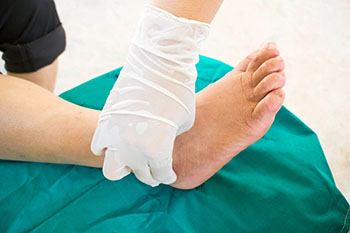
Wounds on the feet are a common occurrence in people who have diabetes. This is because those with diabetes also tend to have peripheral neuropathy, a type of nerve damage that can cause loss of sensation in the lower limbs, and poor blood circulation. Any small cut, scrape, or sore on diabetic feet may go unnoticed because of a lack of sensation, while poor blood flow to the area can mean that any injury will heal slowly, poorly, or not at all. Left undetected and untreated, even small wounds can become diabetic foot ulcers (DFUs), which can become infected and lead to serious medical complications, up to and including amputation in the worst-case scenarios.
Fortunately, there are steps that those with diabetes can take to care for their feet and prevent the formation of DFUs. People with diabetes should wear shoes and socks when walking to avoid foot injuries. The shoes should fit properly, cushion the feet, and have a low heel. When trimming the toenails, nail clippers should be used to cut the nails straight across and not too short. This helps prevent ingrown toenails, which can become infected and lead to DFUs. Finally, it is important to be vigilant of any potential foot problems by inspecting the feet daily for any irregularities, such as cuts, scrapes, sores, discoloration, swelling, pain, or any strange sensations like numbness, burning, or tingling.
To learn more about how to care for diabetic feet and prevent and treat foot wounds, please speak with a podiatrist.
